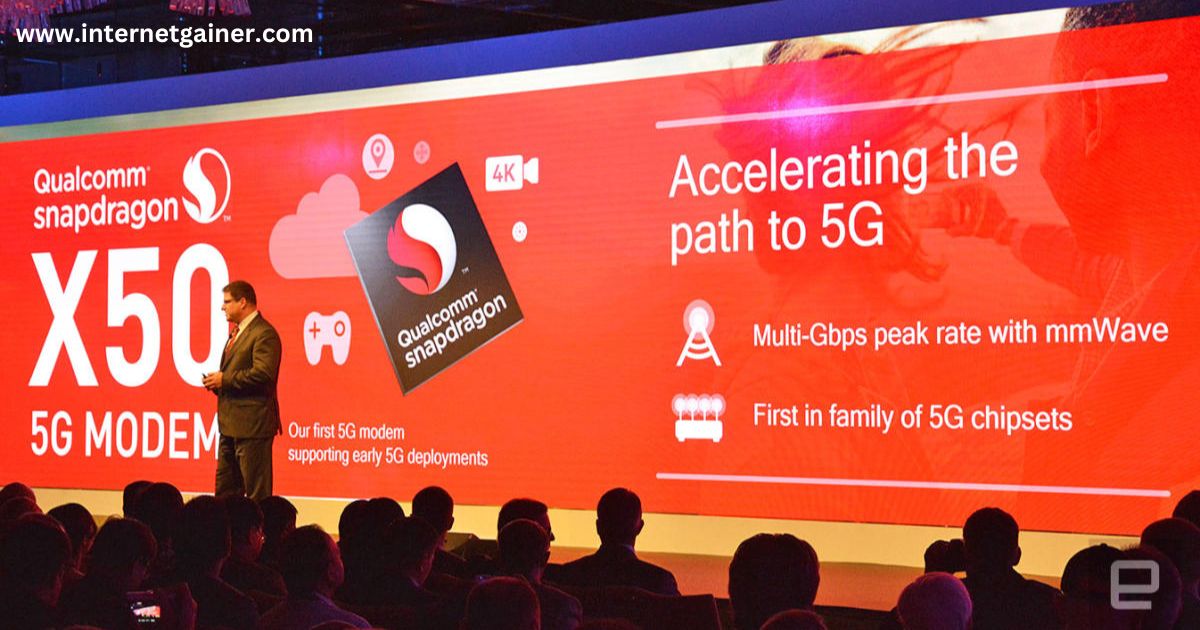Choose this topic
ToggleThe debut of Qualcomm’s 5G RAN (Radio Access Network) chips in Vietnam marks a major milestone in the country’s digital transformation journey.
These advanced chips are expected to fast-track the deployment of 5G networks, bringing enhanced connectivity and spurring innovation across industries. But what does this development truly mean for Vietnam’s tech landscape? Let’s explore this in detail.
What Are Qualcomm’s 5G RAN Chips and Why Do They Matter?
Qualcomm’s 5G RAN chips are designed to optimize the development and operation of next-generation mobile networks. Unlike traditional proprietary RAN solutions, these chips support Open RAN (O-RAN) architectures, enabling telecom operators to integrate equipment from multiple vendors. This approach:
- Promotes competition and innovation in the telecom space.
- Reduces the cost of 5G network deployment.
- Provides greater flexibility in designing scalable networks for both urban and rural settings.
In Vietnam, where telecom operators are gearing up for large-scale 5G implementation, Qualcomm’s technology can serve as a cornerstone for building high-performance and cost-effective networks.
Why Is Vietnam an Attractive Market for Qualcomm’s 5G RAN Chips?
Vietnam’s rapidly growing digital economy and the government’s ambitious plans for nationwide connectivity make it a key player in the Southeast Asian telecom market. Key factors include:
- Government Support for 5G Expansion:
The Vietnamese government has been proactive in rolling out 5G, partnering with telecom giants and local tech firms to ensure rapid adoption. - High Smartphone Penetration:
With a mobile subscription rate exceeding 150%, Vietnam presents a lucrative opportunity for 5G services. - Booming Tech Manufacturing Sector:
Vietnam is a manufacturing hub for global tech giants like Samsung and Intel, making it a strategic location for integrating 5G technologies into supply chains and production processes. - Demand for Advanced Connectivity:
The rise of smart cities, IoT applications, and cloud-based services creates a pressing need for faster, more reliable networks.
What Impact Will Qualcomm’s Chips Have on Vietnam’s Economy?
The introduction of Qualcomm’s 5G RAN chips has the potential to revolutionize various sectors, including:
1. Telecommunications
- Telecom operators like Viettel and Vinaphone can deploy 5G networks faster and at a lower cost.
- Improved rural connectivity will bridge the digital divide, enabling more widespread access to digital services.
2. Manufacturing
- Factories can leverage 5G for real-time monitoring, predictive maintenance, and automation, improving productivity and reducing costs.
3. Healthcare
- 5G enables advanced solutions such as telemedicine, remote surgery, and faster diagnostics through real-time data sharing.
4. Education
- Students in remote areas can benefit from VR classrooms, interactive e-learning platforms, and better access to educational content.
What Are the Potential Challenges to 5G Rollout in Vietnam?
While Qualcomm’s chips offer numerous advantages, some challenges remain:
- High Initial Investment: Deploying 5G infrastructure requires significant capital expenditure, which could strain smaller telecom providers.
- Infrastructure Limitations: Rural areas may face slower rollout due to logistical and financial hurdles.
- Vendor Coordination: Ensuring smooth interoperability among diverse O-RAN equipment vendors requires meticulous planning and robust testing.
How Does Qualcomm’s Entry Affect the Global 5G Market?
Vietnam’s adoption of Qualcomm’s chips is a noteworthy development for the global telecom industry. It demonstrates:
- The growing influence of O-RAN technologies in driving cost efficiency and innovation.
- Qualcomm’s ability to expand its footprint in emerging markets.
- Vietnam’s commitment to becoming a regional leader in 5G adoption, setting an example for other Southeast Asian nations.
FAQs About Qualcomm’s 5G RAN Chips and Vietnam’s 5G Market
1. What are the benefits of O-RAN technology for Vietnam’s telecom operators?
O-RAN allows telecom operators to use components from multiple vendors, reducing dependency on single-source solutions, lowering costs, and promoting flexibility.
2. How soon can consumers in Vietnam expect widespread 5G availability?
Urban areas like Hanoi and Ho Chi Minh City may experience significant 5G improvements within a few months, while rural areas might take longer to catch up.
3. Will 5G deployment affect 4G services in Vietnam?
5G networks are designed to complement existing 4G infrastructure, ensuring a seamless transition and coexistence.
4. What industries will benefit most from 5G in Vietnam?
Manufacturing, healthcare, education, and e-commerce are expected to see the most significant transformations.
Key Takeaways
- Qualcomm’s 5G RAN chips bring advanced technology to Vietnam, enabling cost-effective and scalable 5G networks.
- Vietnam’s rapid digital transformation makes it an ideal market for Qualcomm’s O-RAN-enabled solutions.
- The chips will drive innovations across industries, from manufacturing to healthcare, while helping bridge the rural-urban digital divide.
- Challenges such as infrastructure gaps and high initial costs need to be addressed for successful deployment.
Final Thoughts
The launch of Qualcomm’s 5G RAN chips in Vietnam is more than just a technological upgrade—it’s a step towards a more connected and digitally empowered nation. By overcoming implementation challenges and leveraging the benefits of 5G, Vietnam has the potential to set a benchmark for digital transformation in Southeast Asia.
For consumers, businesses, and policymakers, this development signals a future filled with opportunities to innovate, collaborate, and grow in a 5G-driven world. For more 5g Internet information check the internetgainer.
